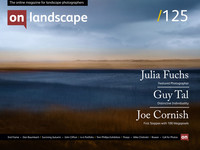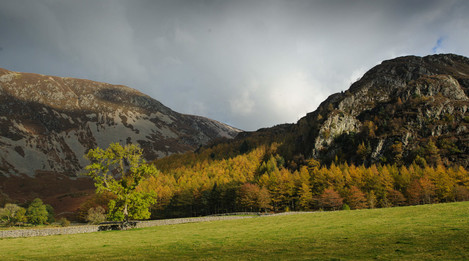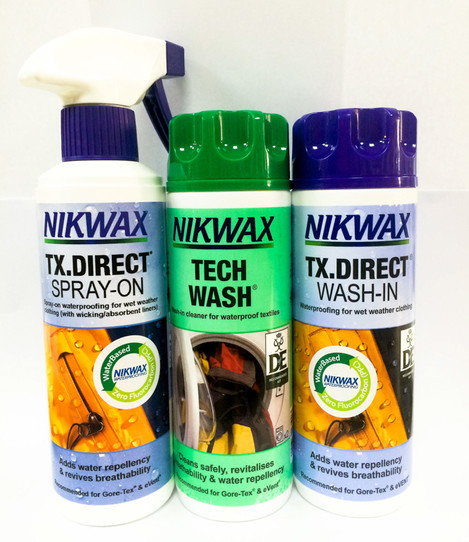Getting the Right Kit

John Clifton
My photography began at my father's side - he processed and printed his own pictures to save on costs, so I did the same. I still hope to ‘dust off’ my darkroom gear at some point, but have spent the last few years learning to make great digital prints. I love the convenience that digital offers, and the immediate visual feedback it provides, but it is still that final analogue print that really ex-cites me. When not working at Trailblazer Outdoors, in Pickering, I am usually out walking the fabulous land-scapes of the North York Moors National Park. This is a place I find endlessly inspiring, offering a huge variety of scenery and subjects in a compact and accessible package. I am also co-organiser of #MOORSVIEW - a bi-annual photography seminar addressing landscape and wildlife photography on the North York Moors and Coast.

Neil Armstrong
Trailblazer Outdoors and Scarborough & Ryedale Mountain Rescue Team.
It can seem like Autumn at any time of the year when you are in the Lake District - such is the famed changeability of the weather. And some would argue that climate change is leading to a similar blurring of traditional seasons for the whole of the UK - turning the mild changeability of Autumn into the norm. With this in mind, we thought we would take a look at some of the issues and kit outdoor photographers need to think about when heading out into changeable weather.
Being prepared for all possibilities is always going to be a challenge, but a key Autumn priority for me is protection from the rain - both from myself and my photographic gear. Starting with the latter, if I am taking a substantial amount of kit out it goes in my F-Stop Loka bag. This is made from sturdy, water repellant materials, has a good supportive back system, and a substantial hip belt to transfer the bulk of the weight effectively to my leg muscles.
It also provides plenty of space - not only for my camera gear, but also for the waterproof and warm clothing, food and drink that I need to carry. However, it is most definitely not fully waterproof. That’s because of all the stitching needed to join together the various panels that make up the rather complicated shape of the bag. The way most things - jackets, tents, etc - get around this problem is to apply waterproof tape over the seams.
Doing this in an elaborate shape like a rucksack is difficult and expensive, so you won’t find many genuinely waterproof photo bags. In fact if a camera bag says it provides ‘all weather protection’, it usually means it comes with a separate rain cover. This will certainly stop the outside getting too wet, but personally we wouldn’t rely on it as a complete solution.

A rain cover over the outside of your bag will help the bag itself stay dry - make sure it fits properly, and choose a bright colour so it can be spotted in an emergency. Dry bags and phone pouches offer extra protection for spare dry clothes, and valuable electronics
The reason is that water has a way of finding a route in, whatever you put on the outside of the bag - down your back is a favourite route in if it’s a rucksack. Rain covers also have an annoying habit of getting blown around in the wind when you are trying to put them on, and then working loose unless tightly attached. They also impede you getting to anything inside the bag, or any external side pockets.
One solution - and something Neil and I tend to use for expensive/essential bits of kit - is to put things inside dry bags, or dedicated pouches. That way you know that even if the water should get into the bag itself, your iPhone, iPad, camera, and particularly your spare dry clothing, are all well protected. Dry bags come in a variety of sizes and colours, so they can also provide a useful way of organising and identifying your kit.
You can get what are effectively dry bags with shoulder straps on too - turning them into a lightweight fully waterproof rucksack suitable for carrying lightweight jackets, a fleece for warmth, and a snack lunch. However, they are literally a bag with a roll closure top - with no significant back system, and no real structure to support or cushion what is inside.
I use one of these myself when conditions are mild, when I am going out ‘fast and light’, or for sight-seeing when I am only carrying a Fuji X-100 or similar small CSC with me. The Exped Cloudburst bag I use is hard to come by now, but we have recently found a new range of similar bags from a British company called OverBoard. These have a more substantial construction - albeit at the expense of extra weight - with wider straps and some limited back padding.

My trusty Exped Cloudburst bag is difficult to obtain now, but British Company OverBoard make a range of similar lightweight waterproof bags - including some designed to just take an SLR
Out in the open…
This is fine when the camera is safely tucked away inside your bag, but when I am out walking it is usually out ready to catch those fleeting photographic moments as the light and weather change. Personally I hang the camera from the shoulder straps of my rucksack, using a set of Think Tank Camera Support Straps. These take the weight from around your neck and transfer it to the much more substantial and comfortable back system of the bag. Having the weight of the camera and lens on the front helps to balance up the whole package as well - aiding stability when you are covering uneven terrain or heading up or down hill.

Hanging the camera from the straps of your rucksack takes the weight off your neck and helps to balance the weight on your back. A suitably sized dry bag can make an effective rain cover if needed.
Having the camera out leads on to the need to protect it - however shower or waterproof your camera system claims to be, rain on the lens is still going to be a problem..! Personally I carry a dry bag that is just big enough to go easily over the camera and lens and then clip together around the hanging straps. There is still an opening on the bag using this method, but it faces my body and is therefore largely protected from everything but the worst downpours. It can also be put on and removed in a hurry.
Keeping yourself dry - top half…
And that leads us on to keeping yourself dry. The minimum that most people will have will be some kind of waterproof jacket - either featuring a waterproof membrane, like Gore-Tex, or possibly a Paramo style analogy garment. Whatever kind of jacket you have, the more changeable weather of Autumn is a good prompt to treat it to a wash and possibly a re-proof. This will help to keep the face fabric water-repellant, and the system as breathable as possible.

Whether your jacket is lined with a membrane like Gore-Tex or Pertex Shield, or is a non-membrane Paramo Analogy Waterproof, you must wash and re-proof it regularly to keep it performing well.
Note here that the requirement to wash and re-proof applies just as much to membrane based systems as it does to those without - they all need to be regularly maintained if they are to perform well. The gold standard system for doing this is made by Nikwax - a British company founded by Nick Brown - which forms the base upon which the Paramo waterproof and breathable clothing brand has been built.
There are two stages to the process:
Tech Wash - for washing your gear
This is a gentle non-detergent soap formula that removes dirt from whatever waterproof clothing system you use, whilst leaving any water repellant coating largely intact. By contrast, using an ordinary detergent to wash your gear will clean it, but it will also strip off any water repellency. Furthermore, it will leave behind detergent residues that stick to the surface of your garment. Ironically enough, these residues are hydro-phyillic - attracting water to them - which is that last thing you want on a waterproof jacket..! The residues can also block some of the pores in the waterproof liner inside, making it less breathable.
TX Direct - for re-proofing your gear
Tech Wash may be gentle, but each wash does remove a small amount of the water repellant coating applied to your jacket. So after about five or six washes the coating will be ‘wearing a bit a thin’ - it’s effectives reduced by the washing, and also by abrasion and exposure to UV. At this point it is time to use TX Direct to apply a fresh coating of water repellency. All of this can be done in an ordinary washing machine, although the formula is also available in a pump spray for application to the outside of rucksacks and other bags.
The breathable membrane paradox…
That’s fine in principal, but in our experience we have found that it is quite easy to ’wet out’ - or overwhelm - even the most breathable of membrane lined jackets. This is particularly true in the relatively mild conditions of Autumn and Spring. If it starts raining - when you are most likely to be wearing the jacket - the humidity will often be little different on the outside to that on the inside of your jacket. So the pull towards equilibrium that the model relies upon is dramatically reduced.
If the water vapour does make it through the membrane, it then meets the additional barrier of the face fabric of the garment. In real world scenarios, the face fabric may not be clean and re-proofed, as advised above, in which case it is likely to be soaking wet with rain water. Nothing will escape through that barrier, and water vapour is just going to condense. That is why it is critical that you regularly use the washing/re-proofing regime outlined above - even if your jacket uses a physical water-proof barrier such as a Gore-Tex style membrane.

Dalby Forest - near Pickering, North Yorkshire - is one of our local stomping grounds, and a fantastic place to capture the beauty of Autumn
The Paramo alternative…
I have to confess that when it comes to waterproofs, we are all ‘Paramo Fanboys (and Fangirls)’ at Trailblazer Outdoors. We just find their gear more comfortable to wear than any of the membrane lined alternatives. And the fact that their analogy garments keep you dry without needing a membrane makes them supremely breathable, and ideal for our increasingly mild, damp climate. Don’t get me wrong, you will get warm inside a Paramo if you are expending energy, but we find that your temperature returns to equilibrium much more quickly, and any damp you feel inside disperses very rapidly.
The way Paramo Analogy garments work is by using an inner ‘pump liner’ that actively moves moisture away from your body - moving water vapour and liquid sweat outwards and pushing it towards the water repellant face fabric of the garment. Because there is no membrane to be protected Paramo face fabrics can be softer and less ‘crackly’ - making them popular with wildlife watchers, and others who want to be ‘stealthy’. It also makes them easier to pack down into a compact space when not in use.
The lack of a membrane makes Analogy waterproofs easy to repair - with Paramo offering a cost effective service, that prolongs the useful life of the garment. Finally, Paramo garments can be re-cycled at the end of their life - something rendered impossible with conventional systems where the non-recyclable waterproof membrane has to be bonded to the face fabric.

We believe the new Velez Jacket is the best lightweight waterproof Paramo have ever made. The venting pockets are high up - making it ideal for use with a rucksack, and the ‘halo’ hood moves comfortably with you as you turn your head. The Velez Jacket’s light weight and moderate insulation make it ideal for the mild, damp climates of Autumn, Spring, and increasingly year round…
Base layers and layering…
Be it membrane based or Analogy, your Jacket will only work well if you are wearing a suitable base layer underneath - to effectively wick sweat away from your skin. If you try to get away with wearing a standard cotton T-Shirt, the moisture is going to soak into it and stay there, making you feel really clammy. Because water molecules are a very effective conductor of heat, the wet fabric can also make you lose body heat very quickly - producing discomfort, but also risking the far more serious problem of hypothermia.
Layering is a useful concept to get your head around in this context, and becomes increasingly important as we move towards the colder months. Combining differing layers allows you to adapt to changing conditions whilst still remaining comfortable:
- Base-Layer - worn fairly tightly next to the skin to wick sweat away so that you stay dry, which is half the battle in keeping warm
- Mid-Layer - provides an additional warm layer when required, usually consisting of some form of fleece to trap a layer of insulating warm air
- Outer Shell - membrane lined or Paramo style jacket provides water and wind repellency, whilst also preventing the insulating warm air from escaping, and cutting down the effect of wind chill
- And this will be my last plug for Paramo. In our experience, unless you are standing still for a long time, or are out in the depths of winter, most people don’t need a mid-layer when wearing an Analogy Waterproof. That’s because the pump liner effectively works like a lightweight insulator - rather like wearing a thin synthetic down layer underneath the outer shell of the jacket. So a good base layer plus the new Velez Jacket will be our ideal walking/photography system this Autumn - and probably well into Winter.
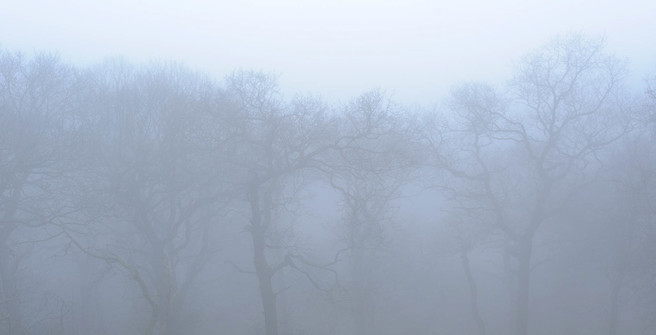
mist and fog are highly prised by landscape photographers, but can make you feel extremely cold. A good base layer will help by keeping your skin dry, whilst a mid layer and outer shell will trap an insulating layer of warmer air and help protect you from the cooling moisture in the atmosphere.
What about my legs..?
Keeping your legs dry is something that often gets forgotten. I have lost count of the number of times I have run into photographers wearing jeans when out in cold, damp, and rainy conditions - yet it is difficult to think of less appropriate leg wear..! They may be tough, but jeans are generally stiff and heavy, they absorb sweat and rain water like a towel, and they take forever to dry - meaning that you get very cold very quickly if the wind picks up.
The changeable conditions of Autumn can be dealt with much more effectively by a good pair of walking trousers. There are many makes to suit all shapes and sizes, but we particularly like those made by the German company ‘HS’ - standing for ‘Hot Sportswear’, don’t laugh..! They come in standard form and fleece lined versions for Winter warmth, in a wide range of sizes and three different leg lengths. But perhaps their best feature is that they are made from a comfortable stretch fabric that moves with you as you negotiate the landscape and any obstacles such as stiles, fences, etc.
Like many dedicated walking trousers, the outer surface is coated with a Durable Water-repellant Coating (DWR) - just like the jacket options discussed above. Whilst not being fully waterproof, this does help rain, and the Autumn mist and dew, to bead up and run off the surface rather than soaking straight in. Being made largely from man made fibres such as polyester, polyamide and elastane, they are also very quick drying. The DWR can be replenished periodically in the same way as described above using Nikwax Tech Wash and TX Direct.
Gaiters are also a sensible addition at this time of year - adding extra protection for your boots, whilst keeping the bottoms of your walking trousers clean and dry. They will also help to combat the spectacular amounts of dew that tends to be a feature when walking through grassland and remaining crops in the Autumn. The pictures below illustrate the way that this can wick up the legs of your trousers if you don’t keep on top of re-proofing for your leg wear..!
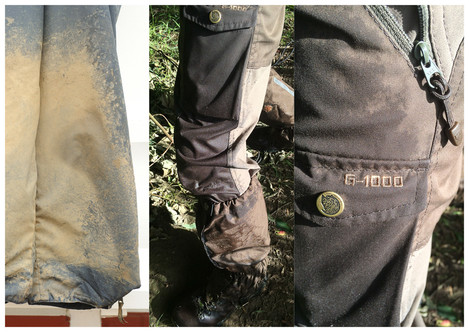
Gaiters are a cheap and practical addition to any outdoor photographer’s kit - keeping some of the mud off of your boots and the bottom of your trousers. The Fjallraven G-1000 fabric that the walking trousers are made from is a dense weave polycotton - extremely tough, breathable and fast drying. However, if not re-proofed regularly with Greenland Wax or Nikwax Cotton Proof, they will still soak up moisture like a sponge. In this case the iPhone that was in the leg pocket was soaking wet by the time I had crossed one dew filled Autumn field - should have put it in one of the pouches pictured at the start of this article..!
If you want to completely protect yourself from moisture, and wind chill, you could invest in some light-weight, membrane lined over trousers. These can be fairly cheap - although Gore-Tex lined ones will set you back over £100 - and they add little weight or bulk to the kit in your bag. However, you do need to be aware of the changing conditions as timing when to put them on can be tricky. You also have to perfect the ‘over-trouser dance’ to get into them without falling over - so look for ones that aren’t too narrow in the leg, and have a decent length zip opening at the ankle.
The ultimate leg-wear..?
Alternatively you could go the whole hog and get yourself some fully waterproof trousers - such as those in the Paramo Cascada, Torres or Enduro ranges. We live in these when we are out in the Autumn and Winter - they keep you cosy and dry when it’s cold, but have full side ventilation for when the sun comes out. They are of course a more serious investment - although you can kit yourself out with everything mentioned so-far for way less than the cost of a ‘professional’ lens for my Nikon D810..!
I hope that we have given you some useful advice here for when you are heading out to capture the Autumn colours. It is a fantastic time of year to be shooting, but you have to be prepared for anything weather wise. If we have at least persuaded you of the value of topping up the water-proof coating on your jacket and trousers, we think we will have done a good job.
Next time we will be looking at issues you need to consider, and kit that can be helpful, when you head out into the landscape this Winter. In the meantime, we look forward to talking to you personally at the Meeting of Minds Conference in November, where the Trailblazer Outdoors stand will feature many of the items mentioned above.

